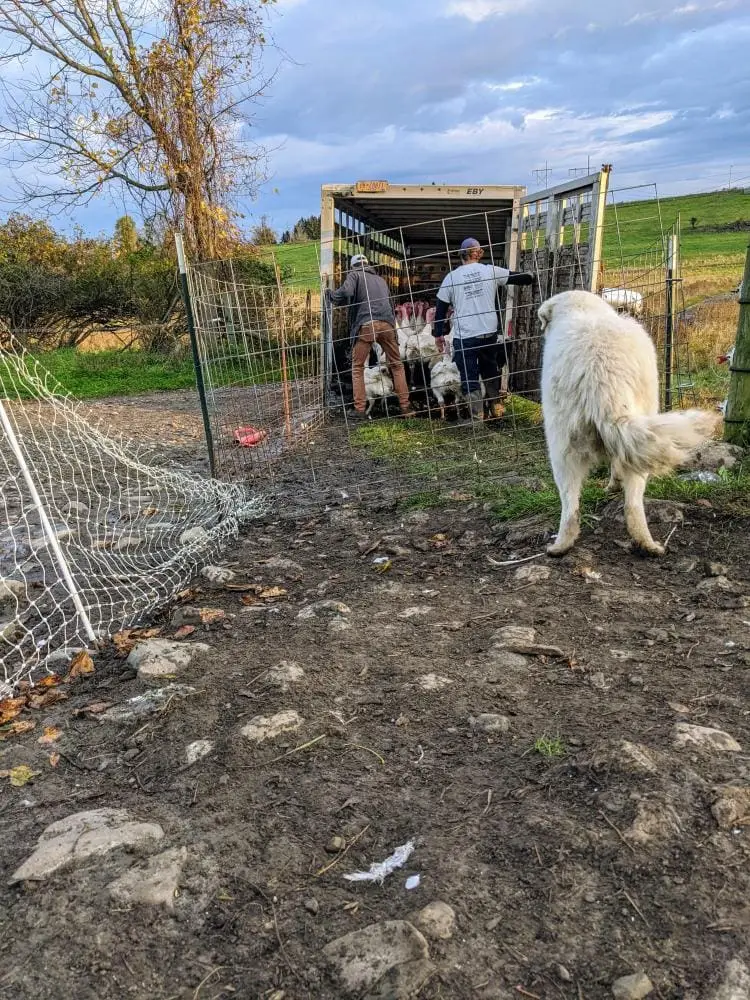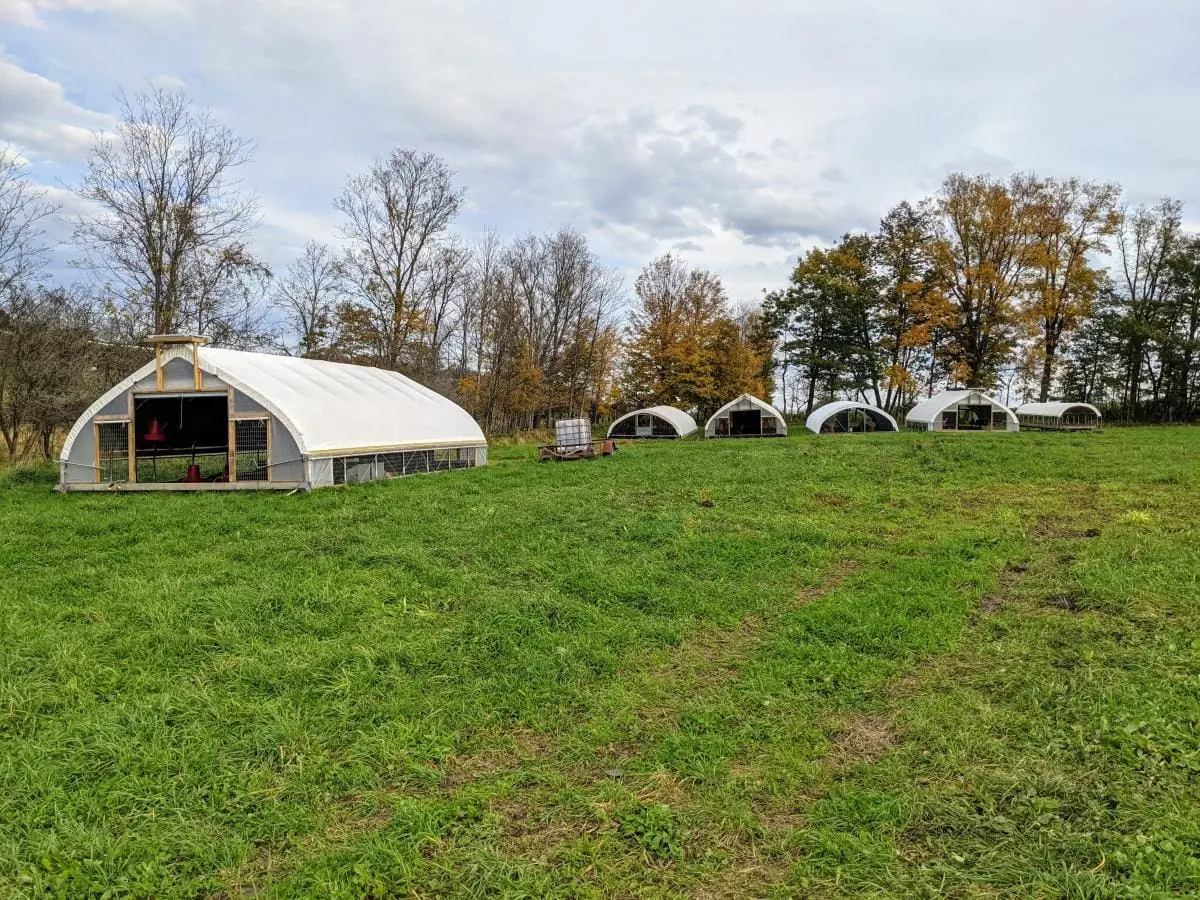This week we’ve reached the end for this season of raising poultry on pasture. Conforming to seasonally-appropriate farming cycles is an important aspect to any sort of agriculture that would claim to be regenerative or sustainable.

We’ve worked out some methods for stretching the chicken and turkey season a bit, but we’ve found that it is best for the birds to keep the season limited. We’ve learned that we need to be ready to handle out-of-season weather but we don’t push the birds into part of the year they just aren’t suited for.
Season Limiters
For our climate, we’ve found that we can begin having chickens on grass in late April, and we really need to be done by late October, maybe early November if we’re feeling feisty. Pasture season for the birds is affected by three factors.
1. Temperature
We need to have consistent temperatures above freezing. The chickens can be fine with slight drops below freezing, but we need the daytime temperatures to be ideally at least in the 50s. Unlike fully grown laying hens, young chickens need to use their calories for growth. When they’re in cold temperatures they end up expending more of their calories on thermal regulation. So at some point the feed is being “wasted” on body heat instead of growth.
Below-freezing weather is also a hassle for us. Keeping large water tanks open for cattle in freezing weather is manageable, but small poultry waterers are more fiddly.
2. Grass
Obviously since we are emphatic about our chickens being pasture raised, we want them to be able to take advantage of green grass. Our grass greens up in late March and early April but it doesn’t hit its growth spurt until around the 10th of May. In the fall, we will continue to get a little grass growth until the hard frosts of November, but for all practical purposes our grasses have finished growing by early September. Our farm’s standard for poultry grass is that it must be vegetative, so that means that April and November are the realistic time boundaries for green grass.
3. Rain
This is often the most important consideration.
In normal years we have wet springs and wet falls. The autumn weather is especially prone to heavy rainfalls from Nor’easters, hurricanes, or remnants of Atlantic storms. During the summer the rainstorms will quickly cycle through the pastures, but during the cool months our heavy clay soils are prone to puddling and mud. While chickens can tolerate cold temperatures, being soaked in cool weather can be far more harmful.
The muddy spring and fall weather also puts practical limitations on what we can do on pasture. We need to be able to move shelters to fresh grass, as well as needing to move feeders and water tanks. When things get gooey, we end up tearing up the grass, rutting the fields, and compacting the soil.
Over the Winter
At the end of the season I tow all the shelters to an out-of-the-way spot for them to spend the winter. Water lines are drained, feeders cleaned out. All the little hoses and fittings go back to the storage shed. I’d like to say that I repair everything during the winter lull, but somehow that never happens. When spring rolls around again I’m rushing to fix all the leftover broken things from the summer before.

This winter the only chickens on the farm will be two dozen sturdy old laying hens. We keep a few hens for our household eggs. But their main purpose is to give our livestock guardian dog something to protect to keep her occupied. An idle guard dog gets up to all sorts of mischief…
Year Round Pasture Raised Chicken and Turkey
Just because our season is limited doesn’t mean you’ll be without Wrong Direction Farm’s organic, pasture raised chicken and turkey this winter. We’ve been working hard all summer raising batches of poultry, and now our freezer is stocked with pallets and pallets of frozen chicken and turkey. For mid-winter meals, pasture raised chicken is edible fortitude; each bite conveys a hint of bright summer days and green grass!
